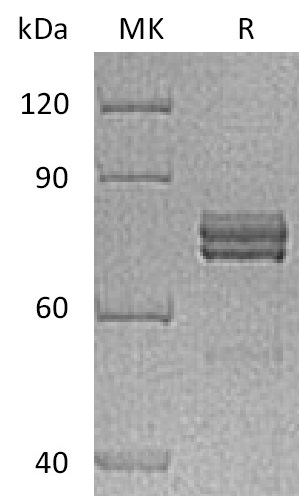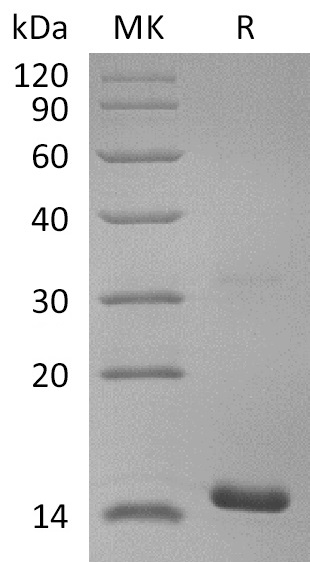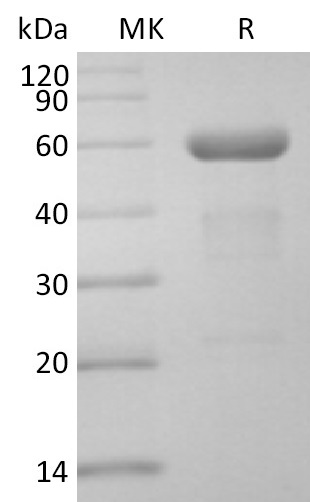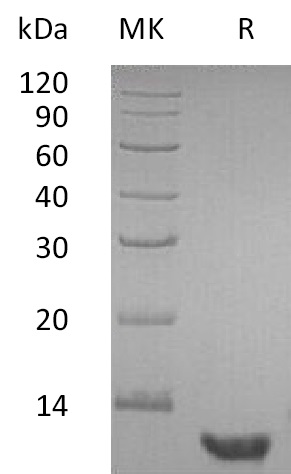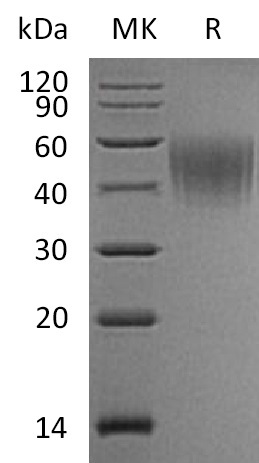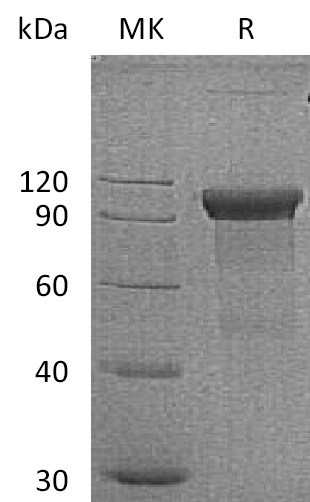

Recombinant Human ROR1 (C-Fc)
- CU96
- 近岸蛋白
- 上海市
- 现货
- 10μg
- ¥400
- 2023-02-03 09:34:36
苏州近岸蛋白质科技股份有限公司
Recombinant Human Inactive Tyrosine-protein Kinase Transmembrane Receptor ROR1 is produced by our Mammalian expression system and the target gene encoding Gln30-Glu403 is expressed with a human IgG1 Fc tag at the C-terminus.
neurotrophic tyrosine kinase receptor-related 1; receptor tyrosine kinase-like orphan receptor 1; ROR1;tyrosine-protein kinase transmembrane receptor ROR1
68.9 KDa
90-110 KDa, reducing conditions
Lyophilized from a 0.2 μm filtered solution of PBS, pH 7.4.
Less than 0.1 ng/µg (1 EU/µg) as determined by LAL test.
Always centrifuge tubes before opening.Do not mix by vortex or pipetting.
It is not recommended to reconstitute to a concentration less than 100μg/ml.
Dissolve the lyophilized protein in distilled water.
Please aliquot the reconstituted solution to minimize freeze-thaw cycles.
Lyophilized protein should be stored at ≤ -20°C, stable for one year after receipt.
Reconstituted protein solution can be stored at 2-8°C for 2-7 days.
Aliquots of reconstituted samples are stable at ≤ -20°C for 3 months.
The product is shipped at ambient temperature.
Upon receipt, store it immediately at the temperature listed below.
ROR1,also known as Neurotrophic tyrosine kinase, receptor-related 1, belongs to the ROR subfamily of Tyr protein kinase family,a protein kinase superfamily. It has very low kinase activity in vitro and is unlikely to function as a tyrosine kinase in vivo. Human ROR1 is a type I transmembrane protein with 937 amino acids (aa) in length. It contains a 29 aa signal sequence, a 377 aa extracellular domain (ECD), a 21 aa transmembrane segment, and a 510 aa cytoplasmic region. Human ROR1 shares 97% and 58% aa sequence identity with mouse ROR1 and human ROR2, respectively. ROR1 may act as a receptor for wnt ligand WNT5A which may result in the inhibition of WNT3A-mediated signaling. ROR1 expressed strongly in human heart, lung and kidney, but weakly in the CNS. Its Isoform Short is strongly expressed in fetal and adult CNS and in a variety of human cancers, including those originating from CNS or PNS neuroectoderm.

